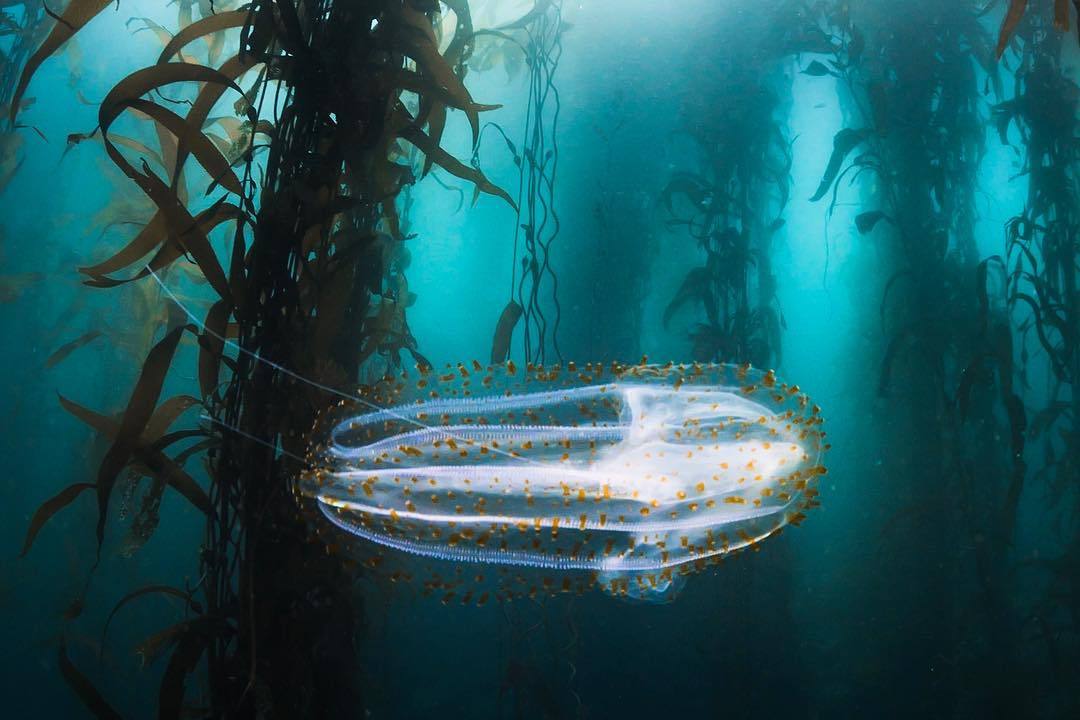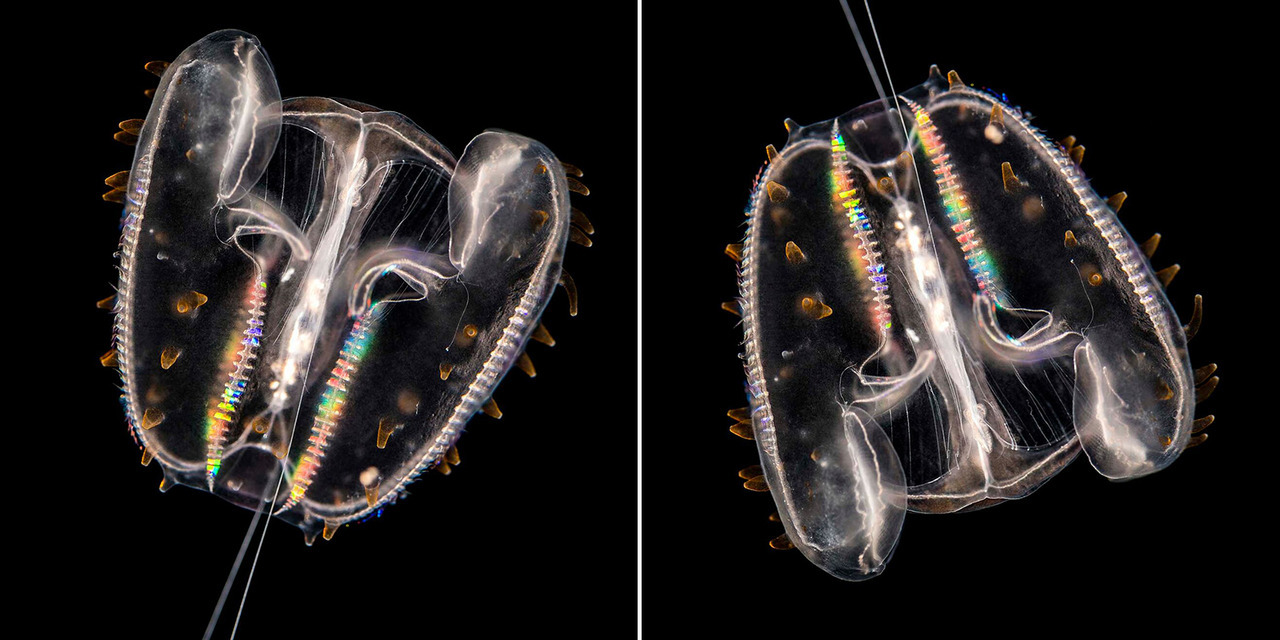Raising the “Beautiful Sea Goddess”
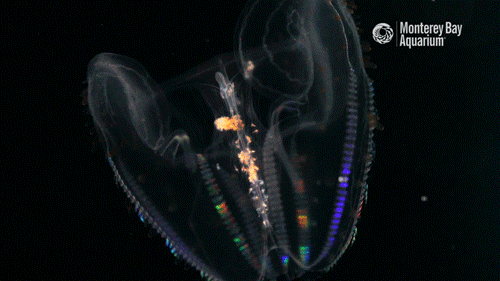
Unearthly, transparent and beautiful—and also exceedingly delicate. The spotted comb jelly is so fragile a creature, just waving your hand through the water could destroy it. Now, for the first time anywhere, our animal care staff have managed to culture these fragile, scintillating creatures.

Several of the newly hatched jellies are now on public display. It’s the latest advance in comb jelly science from our husbandry team.
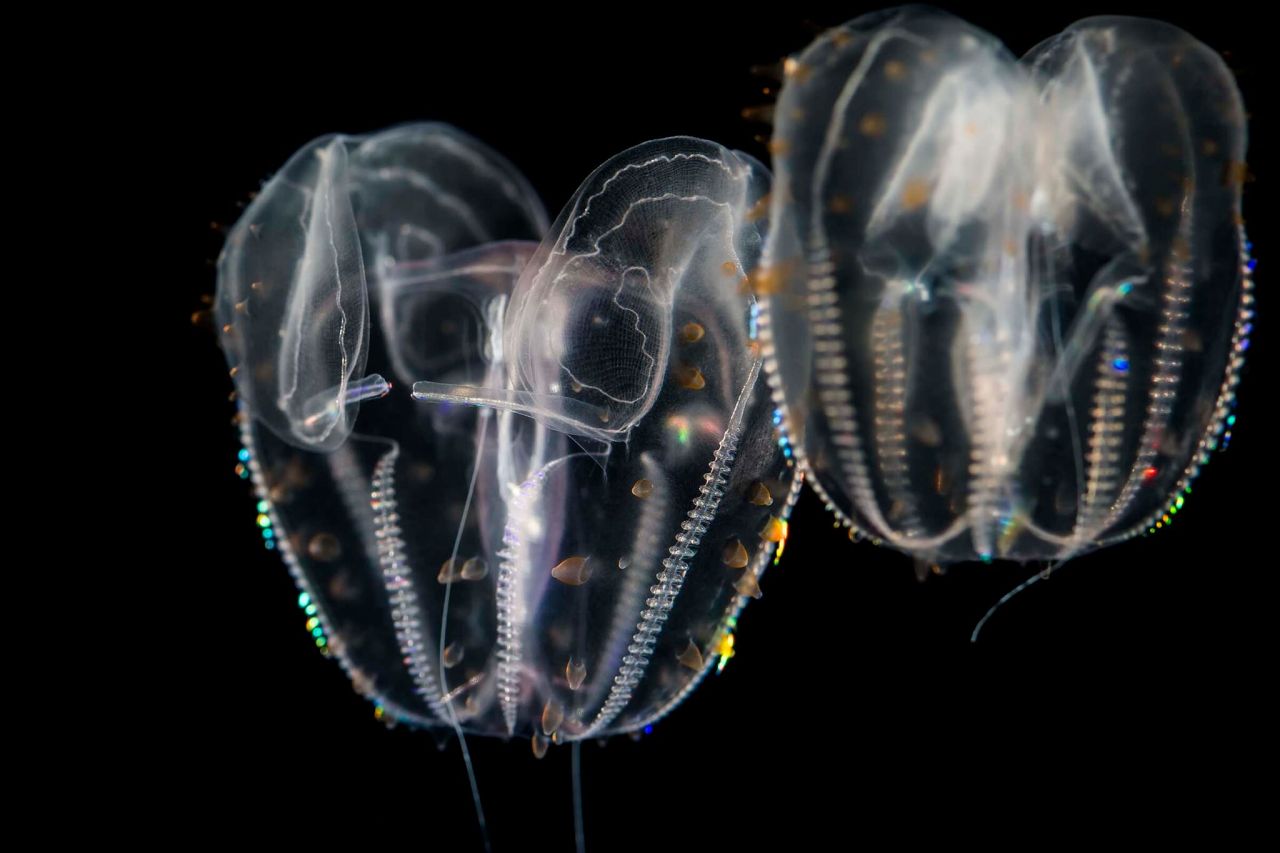
The species, known scientifically as Leucothea pulchra—Latin for “beautiful sea goddess”—is “a clear football-shaped gelatinous animal” says Wyatt Patry, a senior aquarist who’s worked at the Aquarium for 11 years, and who led the culturing effort this winter.

“They’re ctenophores, not true jellyfish,” Wyatt notes. “Instead of stinging cells they have sticky cells called colloblasts.”
The spotted comb jelly’s common name refers to orange “knobs” or spots along its body.
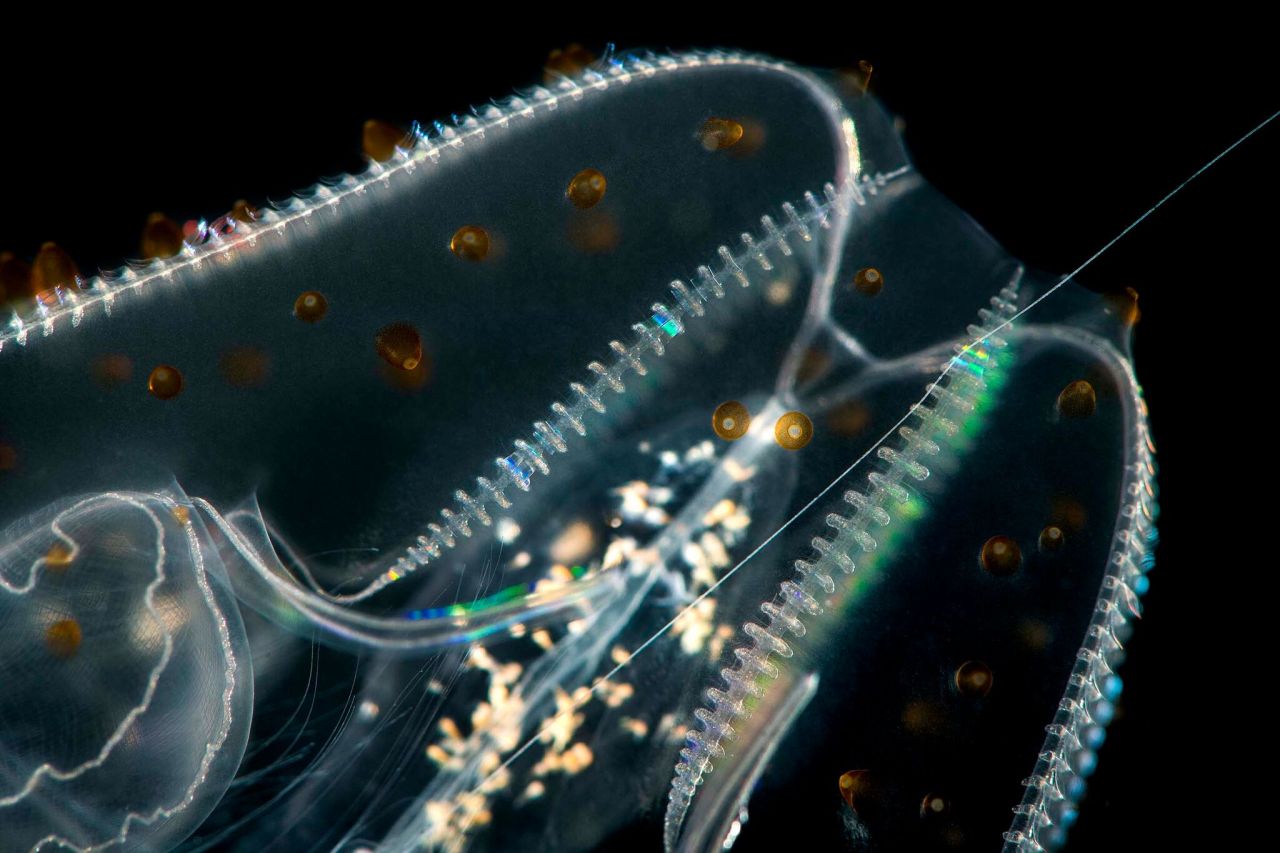
“We don’t know what those do but we suspect they aid in prey capture,” Wyatt says. Two sticky tentacles trail behind it, acting like fishing lines.
“They also have cool whips called ‘auricles’ that they wave around—undulate—in this really cool slow wave motion, probably driving food into their mouths,” he says.

“They are voracious predators—kind of top of the food chain as far as plankton goes,” eating small crustaceans like copepods, mysid shrimp and krill, Wyatt says. They also feast on pelagic worms and larval fish. The team was also surprised to discover that “they will happily eat other jellies. That was something that we did not know.”

Baby Leucothea sometimes look Optimus Prime crying rainbow tears.
‘Barely organized water’
Spotted comb jellies are not endangered, and range from Baja California north to British Columbia. But seeing them in an aquarium is a rare treat, because their extreme fragility makes handling them a dicey proposition.

Trailing tentacles and whiplike auricles help these comb jellies capture their prey.
Wild specimens first went on exhibit in Monterey in 2002, as part of the special exhibition, “Jellies: Living Art.” On rare occasions, and for brief periods, they’ve returned to the exhibit galleries.

Wyatt calls them “a contender for the most delicate animal on Earth.” Another researcher once described them as “barely organized water.”
To protect the easily broken beauties from perturbations, Wyatt says members of the team “have to move like a sloth. In order to move them we’ve got to get a beaker around them, and that has to be done very, very slowly. We try to get them to swim into the beaker so we don’t have to disturb the water around them.”
Slow-motion exhibit maintenance

Just wiping down the acrylic inside one of their holding tanks requires the slowest of motions; a task that would otherwise take only a couple minutes requires twenty.
Senior Aquarist Wyatt Patry helped unlock the secrets of culturing comb jellies, including Leucothea.
In the wild, they take refuge at depths up to 300 feet below the surface, “to get away from all the waves and the swells and commotion up above,” Wyatt says. But they also show up in Monterey Bay in late fall, when surface waters are warm and calm.

That’s where Kevin Lewand, the Aquarium’s collector, found four adult Leucothea one Friday in early December. He brought them back to the Aquarium’s Drifters Lab, where Wyatt set up a six-foot-tall tube designed on site for culturing ctenophores.
“Over the last two years, we’ve really kind of excelled at comb jelly culture here at the Aquarium,” Wyatt says, “so we were really ready to receive and work with Leucothea immediately.”
Here he credits his partner Tommy Knowles, as well as Michael Howard and MacKenzie Bubel.

Within days, the collected adults, which ranged from 12 to 18 inches long and are capable of self-fertilization, had spawned thousands of hatchlings, each half a millimeter in length—a size easily mistaken for a mote of dust. Astonishingly, Wyatt says, “when they hatch, they’re ready to eat prey as big as they are.”
The Aquarium now has dozens of spotted comb jellies on hand. Some grew to four inches long in just two months.
Inspired by Homer’s ‘Odyssey’

George Matsumoto published the first official description of Leucothea pulchra in 1988, though it was earlier described in 1931 in an unpublished master’s thesis by Stanford student L.O. Stanford.
“It was named by the master’s student, and in deference to her work, I kept the unpublished name,” says George, a senior education and research specialist at the Monterey Bay Aquarium Research Institute. The name translates as “beautiful sea goddess.” (In Homer’s “Odyssey”, Leukothea is a sea nymph who rescues Odysseus from drowning.)

Among his observations, George found some specimens with empty stomachs, some with just a few tiny crustaceans inside, others that had eaten worms, and one that had eaten dozens of tiny sea snails.
“So, it appears that they can be picky eaters, sorting out what each individual prefers,” he says.
That the Aquarium has managed to culture the species is “amazing” to George. “I never had much luck keeping them in captivity for more than a day, so I’m completely gobsmacked.”

In more than 30 years, it’s simply not something he ever thought would ever be likely.
“If asked about the possibility, I would’ve estimated less than a 5 percent chance of success—so kudos to the team,” he says.
Successfully culturing a species often opens the door to sharing subsequent generations of offspring with other public aquariums. But Wyatt, having gone to great lengths to put a few on display, doubts it’s realistic in this case. These jellies, he says, are too fragile.

By Daniel Potter

